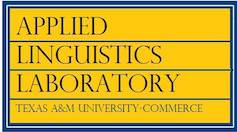Six memos for teaching Italian as a foreign language: Creativity, storytelling, and visual imagination in the language classroom
DOI:
https://doi.org/10.21283/2376905X.10.133Keywords:
FL TEACHING PRACTICES, STORYTELLING TECHNIQUES, CREATIVE WRITING, TECHNOLOGY, ITALIAN LANGUAGE AND CULTUREAbstract
By combining pedagogical, linguistic, and literary perspectives on creativity, storytelling, and visual imagination with their application in the language classroom, this article proposes storytelling and creative writing techniques in teaching Italian as a foreign language (FL). The main objective of this contribution is to provide some concrete examples on how creative approaches can be incorporated in Italian language courses at different proficiency levels. Therefore, the procedures and the theoretical assumptions of three creative projects involving communicative means such as mimes and gestures, and technological tools such as Twitter and meme generators, will be illustrated in detail and put in relation to linguistic research on creativity.
Downloads
Published
How to Cite
License
Copyright (c) 2019 Elena Emma Sottilotta

This work is licensed under a Creative Commons Attribution 4.0 International License.


